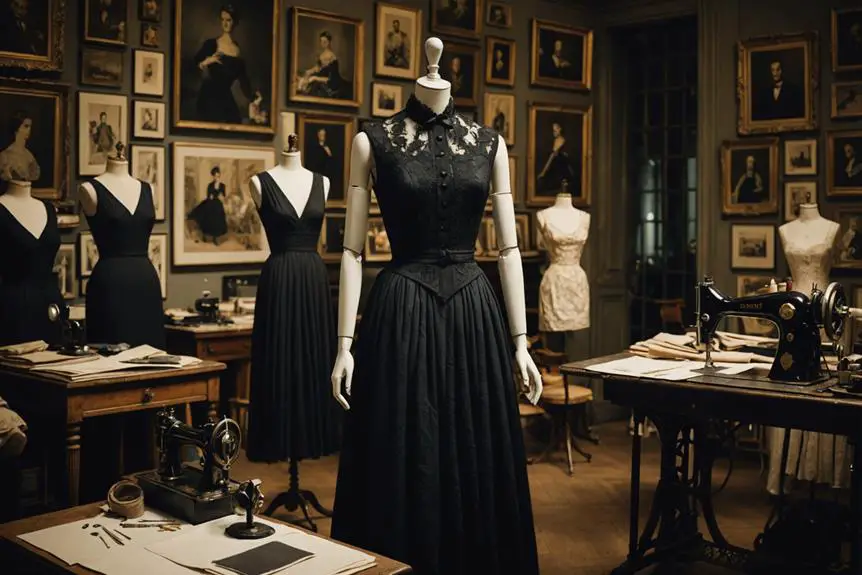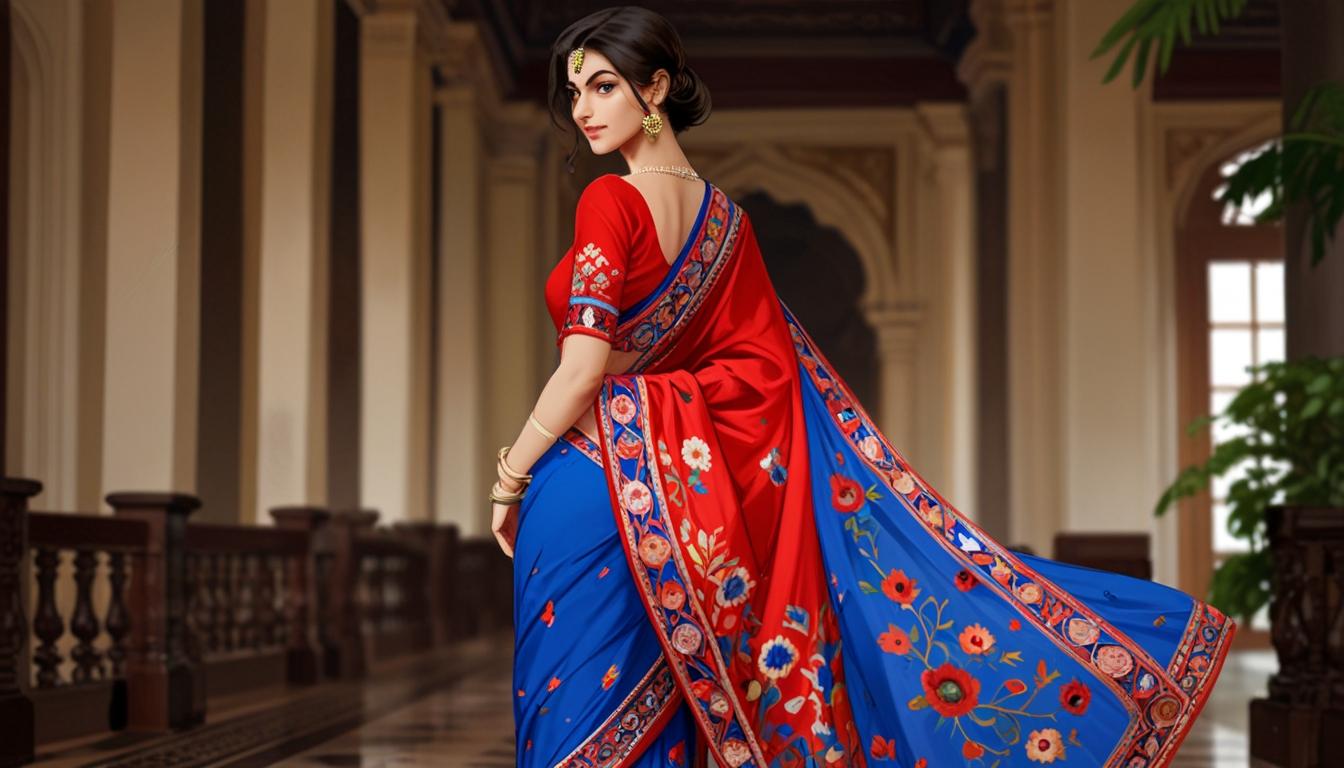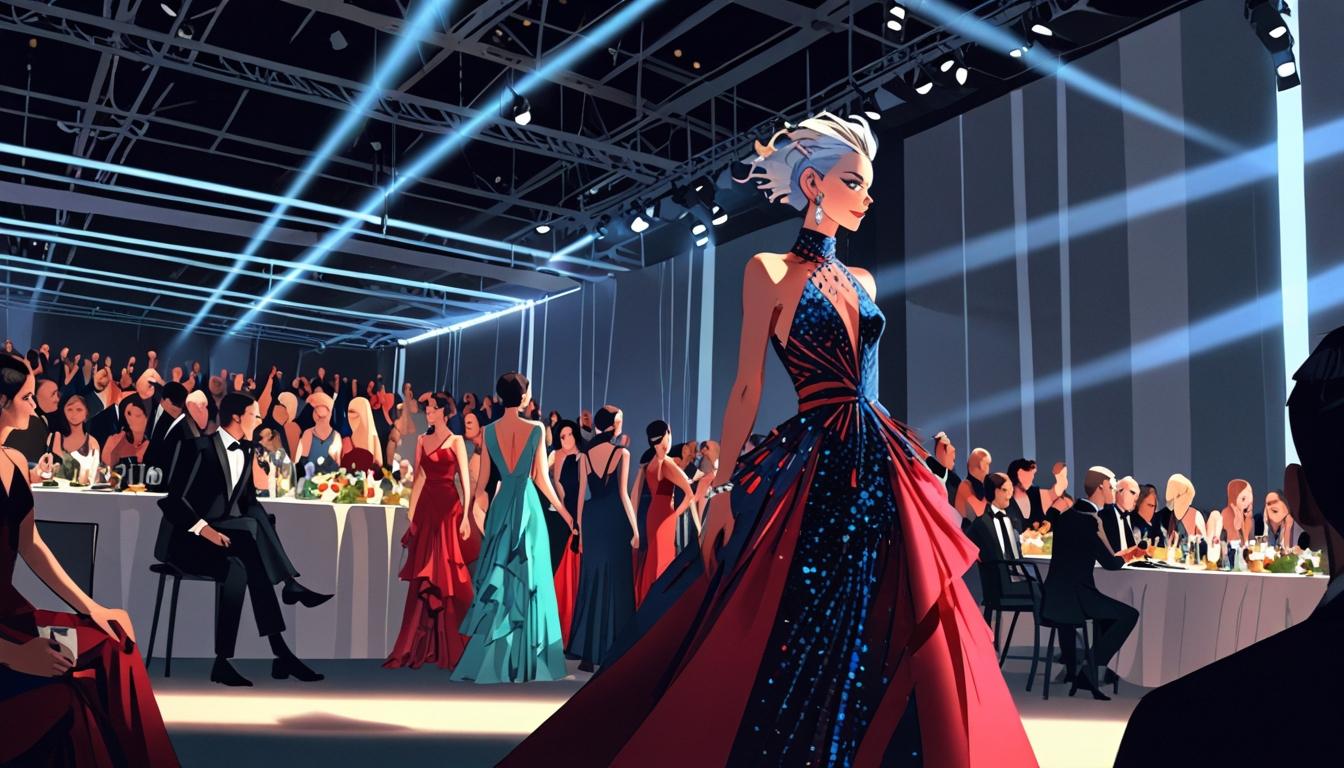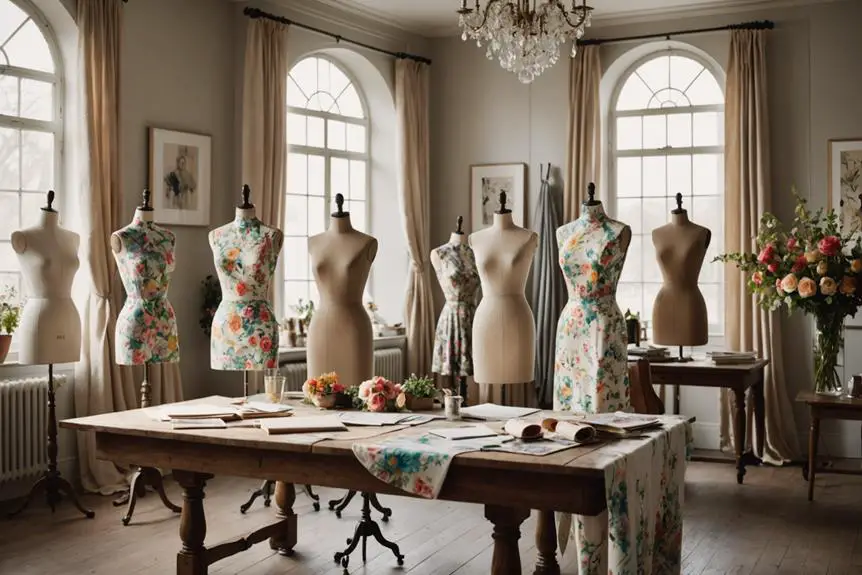The House of Saint Laurent emerged like a phoenix from the ashes of traditional fashion, igniting a transformation in how the world perceives style. As you explore the inception of this iconic brand, you'll uncover not just a story of garments, but a deeper narrative about challenging societal norms and redefining elegance. Yves Saint Laurent and Pierre Bergé's journey is filled with pivotal moments that shaped an era, yet there's much more beneath the surface waiting to be uncovered. What drove this revolutionary vision, and how did it forever alter the landscape of high fashion?
Early Life of Yves Saint Laurent

Yves Saint Laurent was born into a vibrant world on August 1, 1936, in Oran, Algeria, before moving to Paris at just 18 to chase his fashion dreams. His journey began at the prestigious Chambre Syndicale de la Couture Parisienne, where he honed his skills and nurtured his passion for fashion design. Winning a significant design competition showcased his talent, allowing him to leap into the competitive fashion industry.
His early work as an assistant to Christian Dior proved to be a pivotal moment, as it set the stage for his groundbreaking contributions to women's fashion. As a young protégé of the legendary designer Christian Dior, Yves quickly made a name for himself. When Dior passed away in 1957, he was appointed as the creative director, a remarkable achievement for someone so young.
This position not only placed him at the forefront of the fashion industry but also set the stage for the history of the House of Saint Laurent. His early experiences in Paris, including encounters with influential figures in the arts, profoundly shaped his aesthetic vision and innovative design philosophy.
Yves Saint Laurent's diverse background, influenced by his progressive mother and rich cultural heritage, allowed him to create designs that resonated with the times. He blurred the lines between gender and class, introducing groundbreaking ideas that revolutionized women's fashion.
His fearless approach and willingness to challenge norms made him one of the most celebrated fashion designers of his era. Through his journey, you can see how his early life laid the foundation for a legacy that continues to inspire the world of fashion today.
Establishment of the House
In 1961, a significant moment unfolded in the fashion industry with the establishment of the House of Saint Laurent, founded by designer Yves Saint Laurent and his partner Pierre Bergé. This new fashion house quickly became a symbol of innovation and creativity, setting a high bar for haute couture. The official opening took place on December 4, 1961, marking a pivotal start for a brand that would soon redefine luxury fashion.
Yves's vision centered on blending traditional craftsmanship with contemporary flair, allowing his designs to resonate with a broader audience. The first collection debuted in 1962, showcasing groundbreaking styles that aimed to democratize high fashion. It was a daring step away from the elitist approach that had dominated the industry, emphasizing that elegance could be accessible to all.
The headquarters, located at 11 rue Jean-Goujon in Paris, was a prestigious site previously considered by Christian Dior for his own couture house, which added to the allure of Saint Laurent's establishment.
By 1966, the brand launched its first successful ready-to-wear line, Saint Laurent Rive Gauche, which further revolutionized the fashion landscape, proving that high-quality designs could seamlessly fit into everyday life.
With each collection, Yves Saint Laurent pushed boundaries and challenged norms, solidifying his legacy within the fashion world. The House of Saint Laurent continues to inspire designers and fashion enthusiasts alike, remaining a beacon of creativity and boldness in haute couture.
Pioneering Ready-to-Wear Fashion
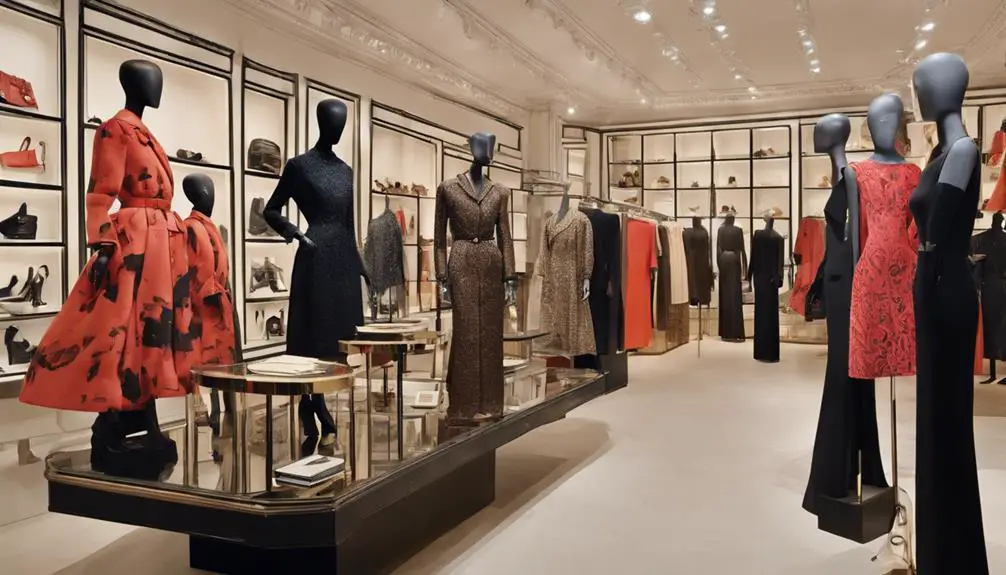
The introduction of the Saint Laurent Rive Gauche line in 1966 marked a turning point in the fashion world, as it made ready-to-wear collections synonymous with high quality and experimental design. Yves Saint Laurent revolutionized the industry by offering a ready-to-wear line that blurred the lines between haute couture and everyday fashion, allowing people to embrace high fashion without the hefty price tag.
With pieces that resonated with the vibrant youth culture of the 1960s and 1970s, the collections were both bold and androgynous, attracting early adopters like Bianca Jagger and Liza Minnelli. One of the most iconic contributions from this era was "Le Smoking," a tuxedo designed for women that challenged traditional gender norms while symbolizing empowerment and sophistication. This daring piece became a hallmark of the brand, showcasing how fashion could redefine societal expectations.
Yves Saint Laurent's innovative approach didn't just change the way we viewed ready-to-wear; it democratized high fashion, making it accessible to a broader audience.
The excitement surrounding the Saint Laurent Rive Gauche line created a movement where luxury was no longer exclusive to the elite but rather embraced by individuals enthusiastic to express their unique identities. This pioneering spirit continues to influence the fashion landscape, reminding us of the transformative power that clothing holds in shaping culture and self-expression.
Iconic Collections and Innovations
Saint Laurent's iconic collections and innovations have left an indelible mark on the fashion industry, showcasing a unique blend of artistry and practicality. One of the most celebrated examples is the 1965 Mondrian cocktail dress, which brilliantly merged modern art with haute couture, demonstrating how fashion can transcend mere clothing.
Then came the groundbreaking "Le Smoking" tuxedo for women in 1966, a revolutionary piece that challenged traditional gender norms and redefined formal wear, becoming a signature item for the brand.
As you explore Saint Laurent's journey, you'll notice how his 1971 collection embraced African-inspired designs, reflecting a commitment to cultural diversity and inclusivity in fashion. This bold move not only celebrated different heritages but also enriched the fashion narrative of the time.
In the 1980s, vibrant colors and striking silhouettes characterized his collections, while the 1990s marked a shift towards minimalism, showcasing the brand's remarkable ability to evolve with the changing tides of style.
Today, under the creative direction of Anthony Vaccarello, Saint Laurent continues to blur the lines between haute couture and everyday fashion, remaining a beacon of innovation and creativity.
These iconic collections not only highlight the brand's rich history but also empower individual expression, encouraging you to embrace your unique style. With each new collection, Saint Laurent proves that fashion is an art form, constantly pushing boundaries and inspiring generations to come.
Legacy and Cultural Impact
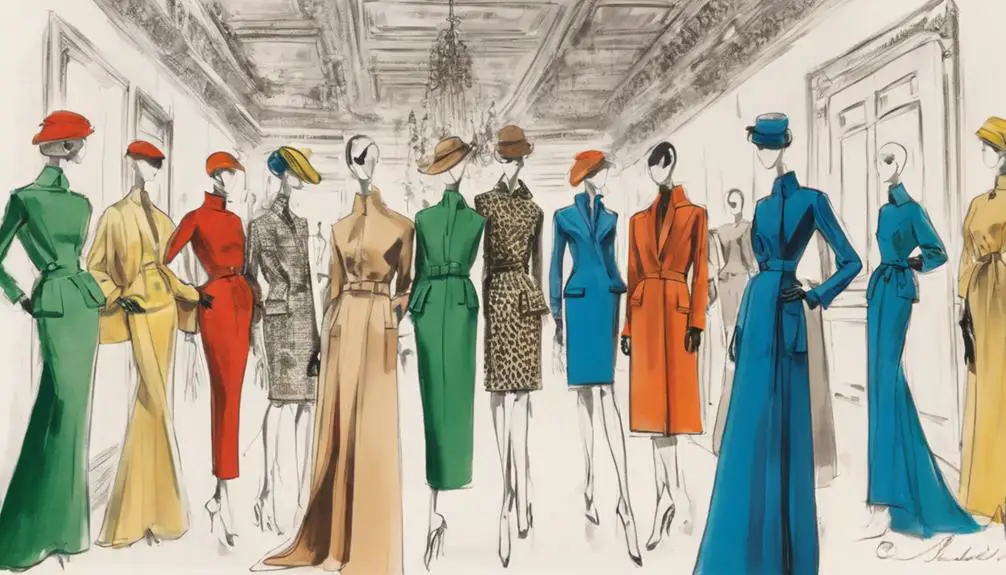
While revolutionizing fashion, Yves Saint Laurent cultivated a legacy that transcends clothing, profoundly influencing cultural norms and conversations. By pioneering gender-fluid fashion with the introduction of the "Le Smoking" tuxedo for women in 1966, he challenged traditional gender norms and established a new cultural icon that empowered individuals to express their identities freely. This bold move not only redefined Haute Couture but also made a significant statement about gender and self-expression.
Saint Laurent's commitment to accessibility transformed high fashion. With the launch of the Saint Laurent Rive Gauche ready-to-wear line, he democratized fashion, allowing everyday consumers to embrace luxury without compromising style. His designs often blurred the lines between fashion and fine art, exemplified by the iconic Mondrian dress introduced in 1965, which showcased how fashion could elevate cultural expression.
Moreover, the brand played a vital role in LGBTQ+ representation within the industry, using inclusive designs and marketing strategies to spark broader social discussions around identity and empowerment. This commitment to diversity not only highlighted the importance of representation but also set the stage for future designers to embrace inclusivity.
Today, the legacy of Saint Laurent endures, adapting to contemporary trends while remaining rooted in its core values of innovation and boundary-pushing creativity. As a leading luxury fashion house, it continues to influence and inspire, ensuring that Yves Saint Laurent's impact on culture and fashion will resonate for generations to come.
